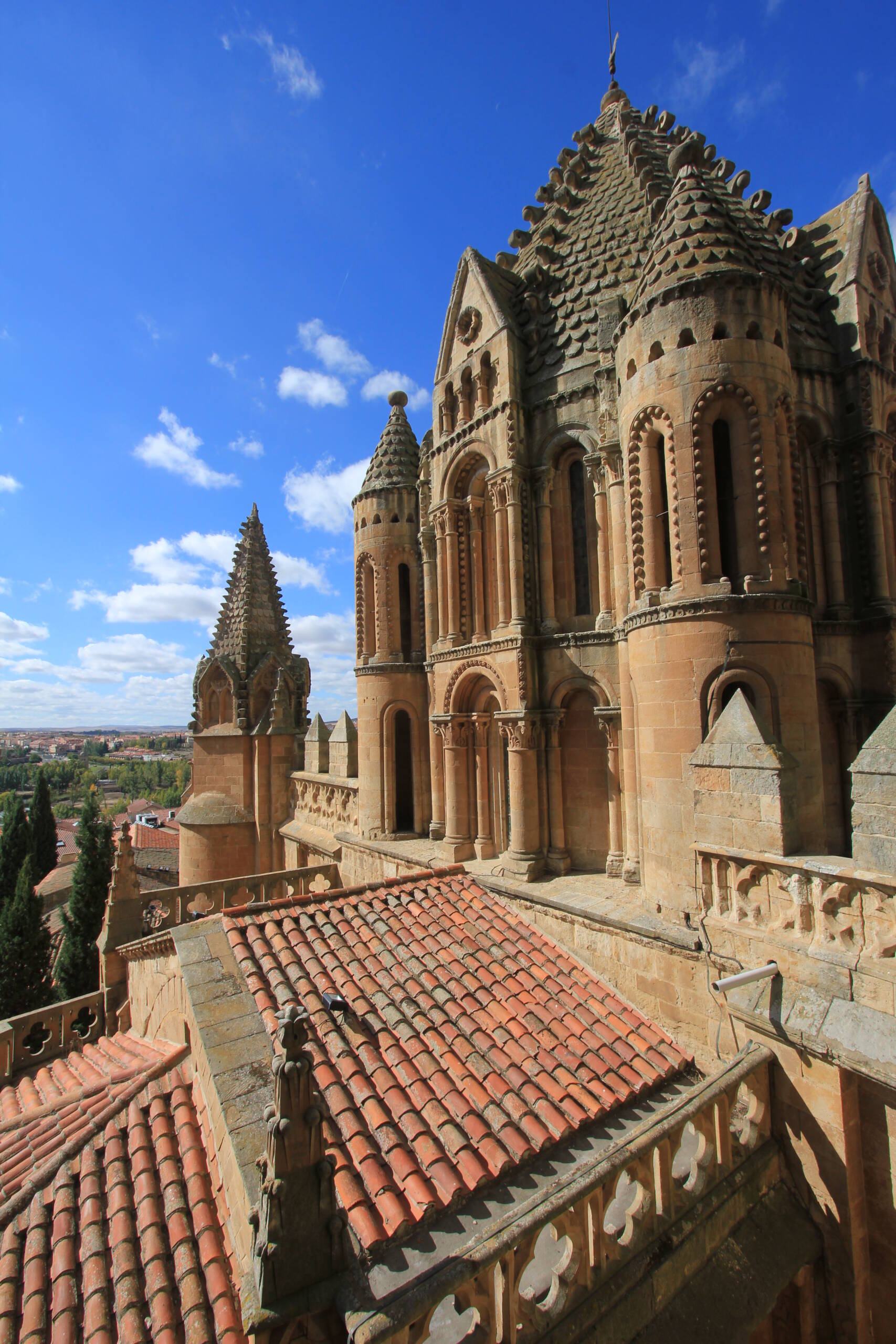From the terraces of Salamanca’s Old Cathedral, the city spreads out like a golden sea of stone and red-tiled rooftops, but what truly catches the eye is the intricate language of the architecture itself. At first glance, it looks like a fortress of Romanesque solidity softened by Gothic ambition, all arches and columns and patterned spires. Yet, when you linger on the details—the scalloped arches, the rhythmic repetition of narrow windows, the almost lace-like stonework—you begin to sense something older, something that reaches back to the long Moorish presence in Spain.

This cathedral is not a mosque, and Salamanca was never Córdoba or Granada, yet the echoes of Al-Andalus are there, woven into the very DNA of its stones. The towers rise in unusual forms, with conical, ribbed, almost minaret-like structures that draw the eye upward in a manner more familiar to Islamic architecture than to northern European Gothic. The scales carved into the spire shimmer like reptilian skin under the sun, decorative yet geometric, an aesthetic that carries the mathematical precision so deeply associated with Moorish design. These are not coincidences; they are remnants of a cultural dialogue that unfolded over centuries, shaping Iberian art and architecture in ways that no political boundary could fully erase.
Walking along the terraces, you feel the dialogue more strongly. The red terracotta rooftops are arranged with geometric discipline, a pattern that could just as easily belong to a courtyard in Andalusia. The arches, too—rounded, layered, with a sense of repetition and rhythm—seem to hum with the memory of the horseshoe arch so beloved by Moorish builders. Here in Salamanca, those influences were absorbed, translated, and reinterpreted into something distinctly Castilian, but their origin remains visible to any traveler willing to look closely.
What makes Salamanca’s Old Cathedral extraordinary is not just its age or its grandeur, but this hybridity. It is a monument not only to faith but also to cultural exchange—sometimes peaceful, sometimes violent, but always present. You stand there, centuries later, on a stone terrace under the Castilian sun, and you see it clearly: Europe and Al-Andalus in conversation. Christian architects borrowing and transforming Islamic ornamentation, creating a fusion that is neither one nor the other but something uniquely Iberian.
And perhaps that is why the view from here feels so powerful. It’s not only the beauty of the sandstone glowing against a brilliant blue sky, nor the city stretching into the distance, but the realization that culture is always porous, that even in times of conquest and division, art and architecture refuse to be bound. They absorb, they transform, and they leave us with buildings like this—where Moorish echoes still whisper in the arches and towers of Salamanca.
Leave a Reply